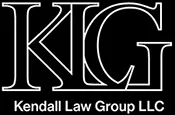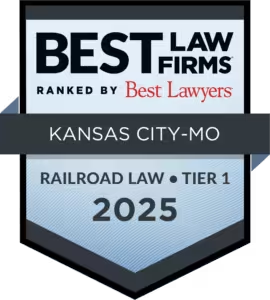
Understanding Comparative Fault in Auto Accident Injury Claims in Kansas and Missouri
As dedicated Kansas City auto accident injury attorneys, we are committed to keeping you informed, safe and compliant on the road. When pursuing a personal injury claim after an auto accident, understanding the concept of comparative fault is crucial. Kansas and Missouri each have specific laws that determine how fault is assessed and how compensation is distributed when multiple parties share responsibility for an accident. These laws play a critical role in determining the outcome of your claim and the amount of compensation you might receive.
This guide explains how comparative fault works, the differences between Kansas and Missouri laws, and what steps you can take to protect your rights after an accident.
What is Comparative Fault?
Comparative fault, sometimes referred to as comparative negligence, is a legal framework used to allocate responsibility when more than one party is at fault for an accident. Instead of one party bearing all the blame and costs, comparative fault assigns a percentage of responsibility to each party involved. This percentage directly affects the amount of compensation a plaintiff can recover in a personal injury claim.
In states like Kansas and Missouri, comparative fault ensures fairness by linking the compensation amount to the degree of fault. However, the two states have different systems for applying this principle.
Kansas: Modified Comparative Fault System
Kansas uses a modified comparative fault rule, which includes specific restrictions on a plaintiff’s ability to recover damages. Here’s how it works:
- Threshold of Fault:
In Kansas, you can recover damages only if your share of the fault is 49% or less. If you are 50% or more at fault, you cannot recover any compensation, no matter how severe your injuries or losses are. - Reduction of Compensation:
If you are partially at fault (but still within the threshold), your compensation is reduced by your percentage of fault. For example:- If the total damages amount to $100,000 and you are 30% at fault, your recovery will be reduced by 30%.
- In this case, you would receive $70,000 instead of the full amount.
This approach emphasizes the importance of proving the other party bears most of the responsibility. Strong documentation and clear evidence can make a significant difference in meeting this threshold. See K.S.A. § 60-258(a).
Missouri: Pure Comparative Fault System
Missouri applies a pure comparative fault system, allowing plaintiffs to recover damages regardless of their fault. Unlike Kansas, no threshold prevents recovery, even if you are found to be mostly at fault for the accident.
- No-Fault Threshold:
You can recover damages even if you are 99% at fault for the accident. However, the amount you recover will be reduced in proportion to your fault. - Proportional Reduction:
As in Kansas, compensation is reduced based on your share of fault. For example:- If the total damages are $100,000 and you are 60% at fault, you can still recover 40%, or $40,000.
Missouri’s system offers greater flexibility, but it also requires plaintiffs to defend against attempts by insurance companies or the opposing party to place significant blame on them. See R.S.Mo. § 537.765.
Key Differences Between Kansas and Missouri Comparative Fault Laws
Understanding the distinctions between these two systems is crucial for anyone involved in an auto accident in Kansas or Missouri:
| Aspect | Kansas (Modified) | Missouri (Pure) |
| Fault Threshold | 49% or less to recover damages | No threshold: recovery allowed at any fault level |
| Impact of High Fault | 50% or more fault bars recovery | Damages reduced but still recoverable |
| Flexibility | Limited by fault threshold | More inclusive but requires more defense against high-fault assignments |
How Fault is Determined in Auto Accidents
Fault in an auto accident is determined by evaluating evidence and applying relevant traffic laws. Common factors considered include:
- Traffic Violations: Running red lights, speeding, or failing to yield can be strong indicators of fault.
- Distracted Driving: Texting, eating, or engaging in other distractions while driving can significantly affect fault determination.
- Weather Conditions: Drivers are expected to adjust their behavior during adverse weather. Failing to do so may result in a higher share of fault.
- Vehicle Maintenance Issues: Accidents caused by faulty brakes, tires, or other vehicle defects can shift responsibility to the driver or even the vehicle’s manufacturer.
- Impairment: Driving under the influence of alcohol or drugs often leads to clear fault assignments.
Evidence plays a central role in establishing fault. Police reports, witness statements, surveillance footage, and accident scene photos are commonly used to build a strong case.
Examples of Comparative Fault in Action
Kansas Example:
- Scenario: A driver is rear-ended at a stoplight but had a broken brake light.
- Fault Allocation: The other driver is found 80% at fault for failing to stop, while the plaintiff is 20% at fault for not maintaining their brake lights.
- Outcome:
- Total damages: $50,000
- Compensation awarded: $40,000 (80% of $50,000).
Missouri Example:
- Scenario: A driver makes a left turn without signaling and is hit by a speeding vehicle.
- Fault Allocation: The plaintiff is found 60% at fault for not signaling, and the other driver is 40% at fault for speeding.
- Outcome:
- Total damages: $50,000
- Compensation awarded: $20,000 (40% of $50,000).
Challenges in Proving Fault
Insurance companies often try to minimize payouts by shifting blame onto the injured party. Some common tactics include:
- Claiming the plaintiff’s actions contributed significantly to the accident.
- Questioning the severity of injuries or damages.
- Using recorded statements or social media posts against the plaintiff.
Building a compelling case with thorough documentation, clear evidence, and witness testimonies is essential to counter these strategies.
Protecting Your Rights After an Accident
If you’re involved in an auto accident in Kansas or Missouri, taking the right steps immediately after the incident can protect your rights and strengthen your case:
- Seek Medical Attention:
Prioritize your health and ensure all injuries are documented. - Document the Scene:
Take photos of the vehicles, road conditions, and any visible injuries. - Exchange Information:
Collect contact details from the other driver(s) and witnesses. - File a Police Report:
An official report provides an unbiased account of the accident. - Avoid Admitting Fault:
Even polite statements like “I’m sorry” can be misconstrued as an admission of blame. - Consult an Attorney:
Navigating the complexities of comparative fault laws can be challenging. A skilled Kansas City auto accident injury trial attorney can help ensure you receive the compensation you deserve.
Why Should You Know About Comparative Fault?
Understanding comparative fault is essential in the event you are involved in an auto accident and are considering filing a claim for personal injuries. Here’s why:
- It Impacts Your Compensation: Comparative fault directly affects the amount of compensation you can receive for damages such as medical expenses, lost wages and pain and suffering after a car wreck. If you are found partially at fault for the collision, your share of blame may reduce your compensation proportionally.
- Insurance Companies Can Use It Against You: Insurance auto accident and bodily injury adjusters often attempt to shift blame onto the injured party to reduce the payout. Understanding comparative fault will help you avoid accepting an unfair settlement offer, with the knowledge that you can make statements that can hurt your case.
Kansas City Auto Accident Injury Trial Lawyers
Comparative fault laws in Kansas and Missouri shape how personal injury claims are handled after auto accidents. Kansas’ modified approach emphasizes a fault threshold, while Missouri’s pure system allows recovery regardless of fault levels. Understanding these distinctions, coupled with careful documentation and timely action, can significantly improve your chances of achieving a favorable outcome.
If you’ve been involved in an auto accident, don’t leave your recovery to chance. Stay informed, take the right steps, and seek guidance to protect your rights and secure fair compensation.
With over 30 years of helping those seriously injured through negligence put their lives back together, the knowledgeable, skilled and aggressive auto accident injury trial lawyers are here to help. Call us at (816) 531-3100 for a free consultation or reach out to us HERE.
Additional Resources:
What To Do After An Auto Accident
Auto Accident: Kansas City’s Top Medical Facilities for Traumatic Injuries
The Importance of GAP Insurance in the Event of a Collision: A Guide for Kansas City Drivers






